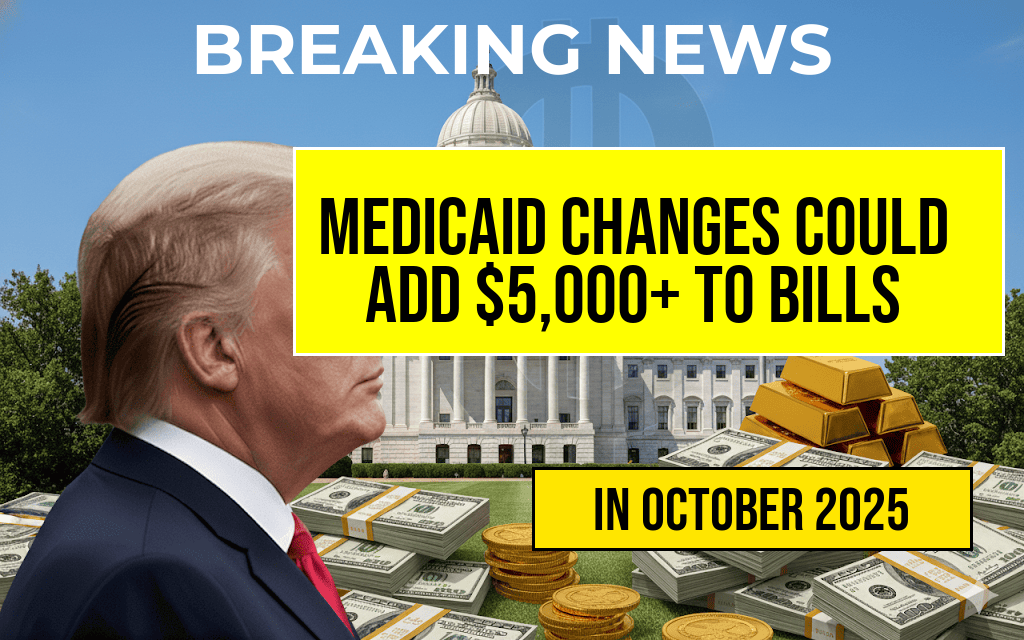Telehealth Funding Cliff Threatens to Push Millions of Seniors Into Financial Strain
As federal support for telehealth services nears a scheduled expiration, millions of American seniors face the prospect of significant out-of-pocket costs that could reach hundreds of dollars each month. The temporary funding provisions established during the COVID-19 pandemic have allowed older adults to access vital healthcare remotely, often at minimal or no personal expense. However, with the impending expiration of these emergency measures, many seniors could be left vulnerable to steep charges, potentially deterring them from seeking necessary care and exacerbating health disparities among vulnerable populations.
This looming funding cliff emerges amid ongoing debates in Congress over healthcare policy and federal budget priorities. While advocates emphasize the importance of telehealth in expanding access, especially for rural and underserved communities, opponents argue that the current levels of public funding are unsustainable. If the support is not extended or replaced with long-term solutions, the consequences could be profound, impacting millions of seniors who rely on these services to manage chronic conditions, mental health, and routine checkups.
The Role of Telehealth During the Pandemic
Expanding Access in Critical Moments
During the height of the COVID-19 crisis, telehealth emerged as a lifeline for older adults, enabling them to consult with healthcare providers without risking exposure to the virus. The Centers for Medicare & Medicaid Services (CMS) temporarily expanded coverage, allowing for increased reimbursement and broader eligibility criteria. This rapid shift facilitated millions of virtual visits, reducing the burden on healthcare facilities and easing access barriers for seniors facing mobility challenges.
According to a report by the Kaiser Family Foundation, the use of telehealth among Medicare beneficiaries increased by over 50% during the pandemic’s peak, highlighting its critical role in maintaining continuity of care.
Financial Implications for Seniors Post-Funding Cliff
Potential Cost Burdens
Without renewal or expansion of existing telehealth coverage policies, many seniors could face substantial out-of-pocket expenses. Estimates suggest that routine virtual visits, which are often free or subsidized now, could cost anywhere from $50 to $200 per session, depending on the provider and service complexity. For seniors managing multiple chronic conditions, monthly costs could escalate into hundreds of dollars, straining fixed incomes and potentially leading to delayed or foregone medical attention.
Impact on Vulnerable Populations
Medicare beneficiaries, who constitute the majority of seniors, are particularly at risk. Many rely on supplemental insurance plans that may not fully cover telehealth visits, especially if reimbursement rates decrease or coverage policies tighten. Rural seniors, in particular, could face additional barriers, such as limited internet access and digital literacy challenges, intensifying disparities in healthcare access and outcomes.
Stakeholders Weigh In
Healthcare Providers and Patient Advocates
- Providers warn that increased costs could lead to decreased utilization, resulting in worsened health outcomes and higher long-term costs due to preventable hospitalizations.
- Advocates argue that maintaining telehealth funding is essential for health equity, especially as the aging population continues to grow.
Policy Debates and Legislative Efforts
Efforts are underway in Congress to extend or make permanent certain telehealth provisions. The Telehealth Extension and Quality Act of 2023 seeks to preserve many of the pandemic-era flexibilities, but political disagreements and budget constraints threaten to derail progress.
Potential Solutions and Future Directions
Policy Recommendations
- Extending current telehealth funding through bipartisan agreements.
- Implementing sliding-scale payment options for seniors with limited income.
- Investing in digital infrastructure and literacy programs targeted at older adults.
Long-term Outlook
Experts emphasize the importance of establishing sustainable, long-term telehealth policies that balance financial realities with the need for accessible, high-quality healthcare. As the nation grapples with an aging population, ensuring that telehealth remains a viable option could be key to controlling healthcare costs and improving outcomes for seniors.
Key Facts at a Glance
| Potential Outcomes | Details |
|---|---|
| Increased Out-of-Pocket Expenses | Senior patients could face costs of $50–$200 per virtual visit, adding up to hundreds monthly. |
| Reduced Access to Care | Fear of costs may discourage regular check-ins, worsening chronic disease management. |
| Health Disparities Widening | Rural and low-income seniors could be disproportionately affected by loss of coverage. |
As policymakers deliberate on the future of telehealth funding, the stakes for America’s aging population are clear: without strategic action, millions of seniors could face a future where vital healthcare becomes unaffordable, risking their health and well-being. Ensuring the sustainability of telehealth support remains a pressing challenge for lawmakers committed to equitable healthcare access.
Frequently Asked Questions
What is the telehealth funding cliff and how does it impact seniors?
The telehealth funding cliff refers to the scheduled reduction or end of government financial support for telehealth services. This could leave millions of seniors without subsidized access, potentially forcing them to pay hundreds of dollars monthly for necessary healthcare services.
Why are telehealth services important for seniors?
Telehealth services provide seniors with convenient access to healthcare from home, reducing the need for travel and in-person visits. They are especially vital for those with mobility issues or chronic conditions, ensuring continuous and timely medical care.
What are the potential cost implications for seniors due to the funding cliff?
If the telehealth funding ends, many seniors could face paying hundreds of dollars per month out of pocket for virtual healthcare, which may not be affordable for all, leading to reduced access to essential medical services.
Are there any policy proposals to prevent the funding cliff from affecting seniors?
Several policymakers are advocating for extending or permanently maintaining telehealth funding support to protect seniors’ access to affordable care. Stakeholders are urging legislative action to prevent the impending coverage gap.
What can seniors and caregivers do to prepare for potential changes in telehealth coverage?
Seniors and caregivers should stay informed about policy developments, explore alternative healthcare options, and discuss with healthcare providers about costs and coverage. Planning ahead can help mitigate the financial impact if funding support is reduced or eliminated.










